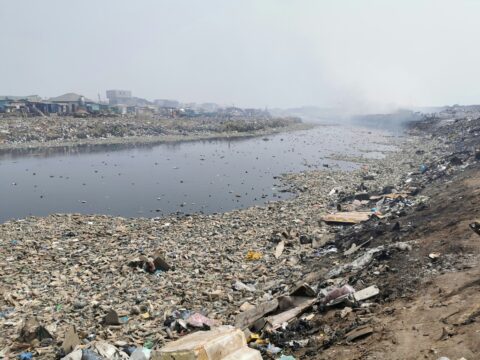Make in India causes American discontent: Notes on World Trade Organization dispute DS456
By Srinivas Atreya Chatti, Associate
Introduction
Even as the Government of India has initiated focussed efforts to develop proper infrastructure for generation of solar energy in the country, some aspects of its implementation program have become contentious issues and consultation of the World Trade Organization has been sought by the United States with respect to certain requirements of the National Solar Mission.
The latest dispute involving India in the World Trade Organization pertains to the claim of the United States that as per the present policy, India provides less favourable treatment to imported solar cells and solar modules and that trade-related investment measures are inconsistent with India’s obligations under the GATT.
The dispute essentially arises from the Jawaharlal Nehru National Solar Mission (NSM), an initiative launched in 2010 with the goal of deploying 20,000 MW of solar panels across the country that would be connected to the grid by 2022 in three phases.
The dispute in the WTO
Since 2013, two complaints have been lodged by the United States in the WTO with Phase I being the subject of the first challenge in February 2013 (DISPUTE DS456). The complaint[1] pertained to specific requirement that developers of photovoltaic projects using crystalline silicon technology had to source their solar cells and modules domestically. The implementation of Phase II of the NSM which was approved by the Government is the subject of subsequent complaint which lodged in February 2014 (DISPUTE DS456/1)[2] as the initial case had not yet advanced past the consultation phase, which is the first level of WTO dispute settlement proceedings. As with the first complaint, the contentious issue pertains to the domestic content requirements which require new solar projects to obtain at least half of their content from local producers, a condition which has been maintained since Phase I of the NSM. Moreover, these local requirements have now been expanded to cover thin film technology, which was not included in Phase I and which make up the bulk of US solar exports to India as over half of the projects under NSM rely on import of this specific product. The complaint also makes a claim that Indian solar power developers are provided with certain benefits such as long-term tariffs on electricity that are contingent on the use of domestically-produced solar cells and modules.
Specifically, the United States has claimed that the measures especially those pertaining to the domestic content requirements appear to be inconsistent with Article III(4)[3] of the GATT 1994 which embodies the principle of National Treatment, Article 2.1[4] of the TRIMs Agreement; and Articles 3.1(b), 3.2, 5(c), 6.3(a) and (c), and 25 of the Subsidies and Countervailing Measures(SCM) Agreement[5]. Therefore, the claim is that the measures appear to nullify or impair the benefits accruing to the United States directly or indirectly under the cited agreements. A defence to these claims would be available if it can be shown that the impugned requirements fall under the exemptions provided under Article III(8) of GATT where the agreements pertain to procurement by governmental agencies for governmental purposes not with view to commercial resale.
The Dispute Settlement Process in the WTO involves several stages and the present case is currently in the second stage[6] of the process with a panel being composed in September 2014[7]. Japan and Australia had requested to join the consultations with several other countries including Brazil, Canada, China, the European Union, Japan, Korea, Malaysia, Norway, Russia and Turkey reserving their third party rights.
The dispute is extremely relevant as India remains a huge market for solar products. In 2011 alone, solar industry products worth around USD 119 million were imported by India from the United States, making India the second largest market for solar products in Asia. The economic aspect of this entire diplomatic exercise cannot be ignored. Whether the requirements actually impact the level of exports is a question only time can tell, although some commentators in Washington have already claimed that the NSM is partly to blame for fluctuations in the market.
Some analysts have also opined that although the NSM has a local content requirement, much of the actual capacity increase seen in India over recent years has come as a result of state schemes, such as the one in Gujarat, which does not have local content requirements. In addition, of the total 9000 mega-watts being commissioned under Phase II between now and 2017, only half – in the first batch of projects, 375 megawatts out of 750 – will be subject to the domestic sourcing requirements.
This facet of the issue needs to be examined in greater detail at this juncture as to whether the actual impact of insisting (or imposing) local content requirements is worth the risk both in terms of attracting investment as well as improving renewable energy technologies. Local/Domestic Content Requirements, such as the one cited in the NSM programme or the Ontario FIT scheme, have been particularly controversial in the renewable energy debate. While advocates say that these requirements are crucial in advancing the development of the sector, creating “green jobs” and increasing opportunities for investment, some critics have warned that Domestic Content Requirements can actually increase energy costs and stifle competition.[8]
Shifting Focus?
The dispute brings to focus the apparent tussle between renewable energy and trade policy and is part of a growing series of green-energy related trade disputes around world. For instance, in December 2010, the United States requested WTO consultations with China regarding subsidies provided to Chinese wind power equipment manufacturers. In addition, a WTO panel ruled in December 2012 on the European Union and Japan’s allegations regarding the domestic content requirements contained in Canada’s feed-in tariff program (“FIT program”). The FIT program aims to increase the share of electricity from renewable sources in overall electricity generation. In November 2011, the US Department of Commerce (DOC) initiated antidumping (AD) and countervailing duty (CVD) investigations into Chinese imports of solar cells, while the Chinese Ministry of Commerce (MOFCOM) initiated a trade barrier investigation into certain US subsidy policies applied to its clean energy industry. In July 2012, MOFCOM also initiated AD/CVD investigations into imports of solar-grade polysilicon from Korea and the United States.[9]
It is however pertinent to note that the manner in which the dispute is resolved and effect it will eventually have on climate change policy will be a critical indicator in our effort to create better policies to tackle the oncoming onslaught of climate change. Increasing economic growth by maintaining integrity of world trade policy while simultaneously promoting and constructing a framework for mainstreaming renewable energy should remain the highest priority for governments across the world.
Even as it is abundantly clear climate change will pose the greatest challenge in near future, the challenge of climate change is one in which the interrelationship between trade, environment and social interests in manifest and the response of the WTO as well as state actors in challenges such as this may will determine its broader future relevance.[10]
[1]https://docs.wto.org/dol2fe/Pages/FE_Search/FE_S_S006.aspx?Query=(%20@Symbol=%20(wt/ds456/1%20))&Language=ENGLISH&Context=FomerScriptedSearch&languageUIChanged=true#
[2]https://www.wto.org/english/tratop_e/dispu_e/cases_e/ds456_e.htm
[3]General Agreement on Tariffs and Trade
Article III*: National Treatment on Internal Taxation and Regulation
4.The products of the territory of any contracting party imported into the territory of any other contracting party shall be accorded treatment no less favourable than that accorded to like products of national origin in respect of all laws, regulations and requirements affecting their internal sale, offering for sale, purchase, transportation, distribution or use. The provisions of this paragraph shall not prevent the application of differential internal transportation charges which are based exclusively on the economic operation of the means of transport and not on the nationality of the product.
[4]Agreement on Trade Related Investment Measures
Article 2: National Treatment and Quantitative Restrictions back to top (TRIMS)
1.Without prejudice to other rights and obligations under GATT 1994, no Member shall apply any TRIM that is inconsistent with the provisions of Article III or Article XI of GATT 1994.
[5]Agreement on Subsidies and Countervailing Measures
[6]https://www.wto.org/english/tratop_e/dispu_e/disp_settlement_cbt_e/c1s5p1_e.htm
[7]https://www.wto.org/english/tratop_e/dispu_e/dispu_current_status_e.htm
[9] Emily Reid, Balancing Human Rights, Environmental Protection and International Trade,: Lessons from the EU Experience Studies in International Trade Law, Bloomsbury Publishing, 2015
By entering the email address you agree to our Privacy Policy.



